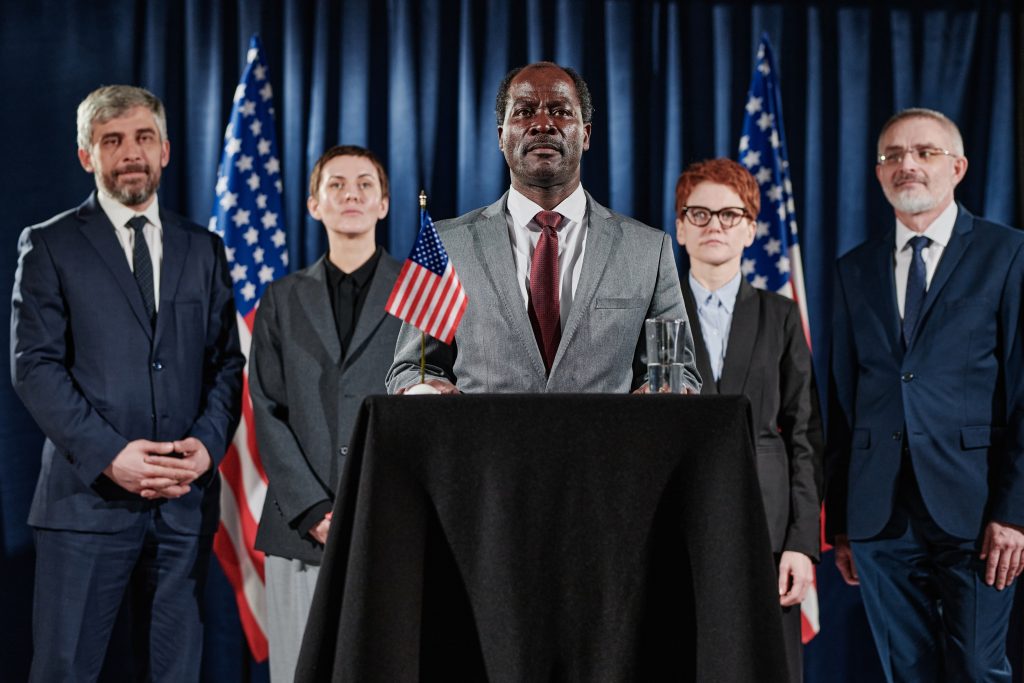Executive Orders Affecting Immigration in 2025: What You Need to Know
In 2025, U.S. immigration policy is once again in the national spotlight, not just in Congress but also through Executive Orders (EOs) issued by the President. These directives, which have immediate legal force, are being used to reshape immigration enforcement, visa programs, humanitarian protections, and asylum processing.

Amid a divided Congress, the President has leaned heavily on executive authority to implement immigration changes quickly. These orders have sparked debates across the political spectrum and significantly impacted immigrants, visa applicants, border communities, and the nation’s global reputation.
In this article, we’ll explore the key Executive Orders on immigration signed in 2025, their implications, reactions from various stakeholders, and what they mean for the future of immigration in the U.S.
What Are Executive Orders and How Do They Impact Immigration?
Understanding Executive Orders
- Executive Orders are presidential directives that manage operations of the federal government.
- While not laws passed by Congress, EOs carry the force of law and can affect federal agencies, immigration courts, and enforcement priorities.
- EOs can override previous executive actions, although they cannot contravene existing legislation.
Why Executive Orders Are Crucial in Immigration
- Immigration involves multiple federal agencies like USCIS, CBP, ICE, and the State Department.
- When legislative gridlock occurs in Congress, Presidents often turn to Executive Orders to address immigration challenges.
- These actions can swiftly alter immigration rules, timelines, and enforcement strategies.
Top Executive Orders on Immigration in 2025
1. Executive Order on Modernizing the H-1B Visa Program
Key Highlights:
- Raised the H-1B visa cap from 85,000 to 130,000.
- Introduced a digital lottery system with greater transparency and real-time application status tracking.
- Prioritized U.S.-educated STEM graduates for visa allocation.
- Required companies to disclose wage levels and certify no domestic worker displacement.
Impact:
This EO is a win for the tech and healthcare sectors. It’s expected to streamline skilled immigration, improve visa fairness, and boost U.S. competitiveness in innovation.
2. Executive Order on Family-Based Immigration Reunification
Major Provisions:
- Reinstated and expanded the Parole-in-Place (PIP) program for undocumented family members of U.S. military personnel.
- Directed USCIS to expedite green card processing for immediate relatives of U.S. citizens.
- Allowed virtual interviews and biometrics collection, reducing processing delays.
Impact:
This EO is a humanitarian step toward keeping families united. It also alleviates long-standing USCIS backlogs.
3. Executive Order on Border and Asylum Processing Overhaul
Critical Changes:
- Created a nationwide Asylum Adjudication Taskforce to address claims within 60 days.
- Expanded the use of humanitarian parole for asylum seekers from high-risk countries.
- Piloted mobile processing units at key border locations to manage high influx zones.
Impact:
This action balances border control with compassion, aiming to improve asylum credibility and reduce backlogs.
4. Executive Order Ending the “Public Charge” Expansion
What Changed:
- Rolled back the 2019 expansion that denied green cards to immigrants using public assistance like food stamps or Medicaid.
- Restored the original 1999 guidance, focusing only on long-term institutionalization and cash benefits.
- Instructed consulates and USCIS officers to immediately follow updated guidance.
Impact:
This EO removes barriers that deterred many from seeking benefits they were eligible for, reducing fear in immigrant communities.
5. Executive Order on DACA and Dreamer Protections
Key Provisions:
- Expanded eligibility criteria for Deferred Action for Childhood Arrivals (DACA).
- Authorized advance parole travel for DACA recipients under humanitarian or educational reasons.
- Directed the Department of Education to provide federal aid eligibility guidance for Dreamers.
Impact:
This move strengthens protections for over 600,000 Dreamers, giving them greater security and mobility.
Political and Public Reactions
Support from Immigration Advocates and Businesses
- Tech leaders, universities, and healthcare employers praised the modernization of the H-1B program.
- Human rights organizations applauded asylum processing reforms and the rollback of the public charge rule.
- DACA expansion received overwhelming support from advocacy groups and progressive lawmakers.
Criticism from Conservative Lawmakers
- Concerns that the border reforms may invite increased migration.
- Accusations that Executive Orders are bypassing the legislative process.
- Some state attorneys general have already filed lawsuits against certain EOs, particularly on asylum and public charge.
Polling Data (2025)
- 67% of Americans support expanding legal immigration, especially for skilled workers.
- 71% support protecting Dreamers.
- However, 55% want stronger border enforcement, signaling the need for a balanced approach.
Legal and Constitutional Challenges
Checks and Balances on Executive Orders
- Courts can strike down EOs that exceed executive authority or conflict with existing laws.
- Congress may pass laws to override or limit the effects of executive actions.
- Litigation is already underway regarding asylum processing reforms and H-1B cap changes.
Key Legal Challenges in 2025
- Texas v. United States over asylum adjudication standards.
- Coalition of States v. DHS on the legality of virtual green card interviews.
- The Supreme Court may ultimately weigh in on the constitutionality of several immigration-related executive actions.
Implications for Immigrants and Visa Applicants
Faster, More Transparent Processing
- Digital transformation is at the core of many executive actions in 2025.
- Applicants benefit from fewer delays, real-time updates, and remote interviews.
New Opportunities for Skilled Workers
- Expanded H-1B caps and fairer allocation systems improve chances for global STEM professionals.
- Entrepreneurs and employers gain easier access to international talent.
Greater Protections for Vulnerable Groups
- DACA recipients, asylum seekers, and military families now enjoy broader protections and clear guidelines.
- The rollback of the public charge rule reduces fear around accessing healthcare and social services.
Future Outlook: What to Expect
Will These Executive Orders Last?
- Future administrations can revoke or amend these EOs.
- Some changes may become permanent if Congress enacts them into law—a goal for immigration advocates in the coming year.
Key Recommendations for Immigrants:
- Stay updated via official USCIS and DHS announcements.
- Consult an immigration attorney before taking action on new policies.
- Prepare documentation early to benefit from expedited processing initiatives.
Conclusion
The Executive Orders on immigration in 2025 reflect a bold effort by the administration to modernize the system, enhance humanitarian protections, and support economic growth through legal immigration.
While these actions are impactful, their long-term success will depend on court rulings, future political will, and public support. For immigrants, advocates, and policymakers alike, 2025 marks a pivotal year in the evolution of American immigration policy.












